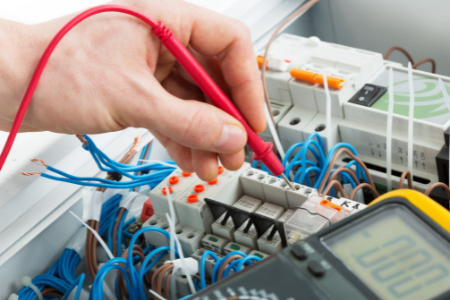Ensuring electrical safety in your home is paramount. While most homes are built to meet safety codes, over time, wear and tear can introduce hazards. To prevent potential accidents, regular electrical safety checks are essential. Here's how to test your home for electrical safety:
1. Visual Inspection: Begin with a visual tour of your house.
- Check outlets for signs of discoloration or burning.
- Look for frayed or damaged wires, especially on appliances and extension cords.
- Ensure that plugs fit securely into outlets.
- Observe that there are no wires running under rugs or across doorways.
2. Test Your Ground Fault Circuit Interrupter (GFCI): GFCIs are designed to protect you from electric shock.
- Find outlets with 'Test' and 'Reset' buttons (common in bathrooms, kitchens, and outdoors).
- Plug in a small appliance (e.g., a lamp).
- Press the 'Test' button. The appliance should turn off.
- Press the 'Reset' button. The appliance should turn back on.
- If it doesn’t respond as described, replace the GFCI.
3. Check Circuit Breakers and Fuses: Your home’s electrical panel is your main line of defense against surges.
- Ensure the panel is easily accessible.
- Every few months, flip each circuit breaker off and then on again to keep them functional.
- Replace any fuses that appear burnt out or discolored.
4. Use an Outlet Tester: These are inexpensive devices that indicate whether an outlet is wired correctly.
- Plug the tester into the outlet.
- Read the pattern of the lights to determine if the outlet is wired properly.
- Any issues? Call a professional.
5. Beware of Warm Outlets or Switches: Outlets and switches should always remain cool to the touch.
- If any outlet or switch feels warm, unplug any devices and avoid using the outlet until it’s been checked by a professional.
6. Ensure Proper Bulb Wattage: Using a bulb with too high wattage can cause overheating.
- Check fixtures to ensure you’re using the correct wattage.
- Consider switching to LED bulbs which use less energy and produce less heat.
7. Watch for Warning Signs: Flickering lights, buzzing noises, and frequent blown fuses can signal electrical problems.
- If you notice any of these, it’s time to call a professional.
8. Avoid Overloading Outlets: Too many devices plugged into one outlet can pose a fire risk.
- Use power strips sparingly and never daisy chain them.
- If an outlet seems overloaded, redistribute the devices to other outlets.
9. Ensure Adequate Space Around Electronics: Ventilation prevents overheating.
- Make sure devices like TVs and computers have space to "breathe."
10. Keep Safety Devices in Check: Smoke alarms and carbon monoxide detectors save lives.
- Test them monthly.
- Replace batteries annually, or as needed.
- Replace the entire device every 10 years, or as recommended by the manufacturer.
Electrical safety at home is crucial. While this guide offers a basic understanding, the best way to ensure electrical safety is to have your home periodically inspected by a licensed electrician. They can spot issues that the average person might miss and recommend effective remedies. Remember, the key to electrical safety is prevention and vigilance. Stay safe!




